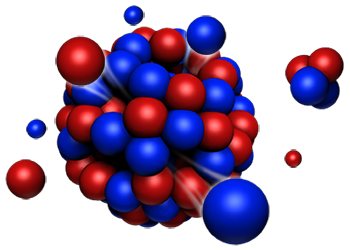Speaker
Description
For direct geometry spectrometers time uncertainties of $ < 10 \mathrm{\mu s}$ are negligible for most measurements. However the ARCS and SEQUOIA instruments at the Spallation Neutron Source use a chopper that produces a time pulse as narrow as $5 \mathrm{\mu s}$ for the finest resolution measurements. Timing uncertainties $\sim 1\mathrm{\mu s}$ are important in this case. Furthermore superresolution techniques have been demonstrated where the relevant time scale for resolution calculations is now controlled by the slope of the moderator pulse shape rather than the pulse width; yet another case where fine timing uncertainties are relevant.
To understand these uncertainties, two studies have been performed on the SEQUOIA and ARCS instruments at the SNS to check the stability of the incident energy ($E_i$) over the coarse of time. First on SEQUOIA a depleted Uranium containing sample was measured with a nominal $E_i = 100$ meV. The beam monitors, the time of the fission neutrons on the detector, and the elastic signal on the detector were all used as fixed points in time. The measurement revealed a slow ($\sim 6$ hour) drift of about $1.2 \mathrm{\mu s}$ that corresponds to an $E_i$ change. During this measurement, the temperature of the water from the moderator was observed to vary by about $1 ^\circ$ C due to power changes from the accelerator.
Since the value of $E_i$ is sufficiently close to the temperature of the moderator, the mean emission time for a given energy changes quickly enough that a small temperature change may be observable in the results. To further correlate the connection between moderator temperature and time shift, measurements of Vanadium were carried out at $E_i = 100$meV on ARCS during the power ramp up at the start of a cycle. Similar time variations, correlated with water temperature, and consistent with incident energy variations, were observed with this measurement. This contribution will more fully describe these measurements and their correlation to moderator temperature. Furthermore other potential causes, like instrument dimension changes or chopper phase instabilities will be discussed and ruled out.

